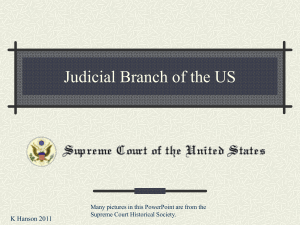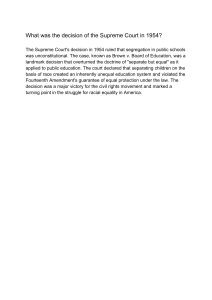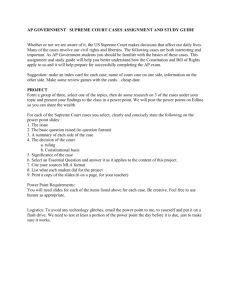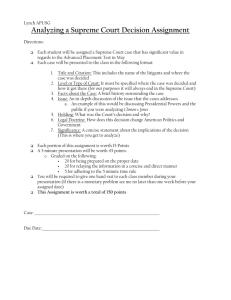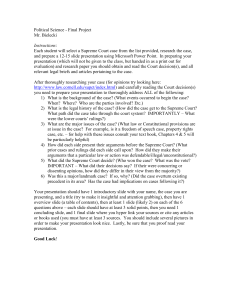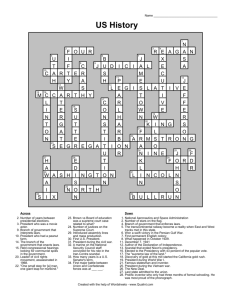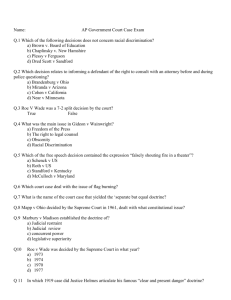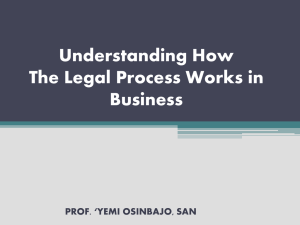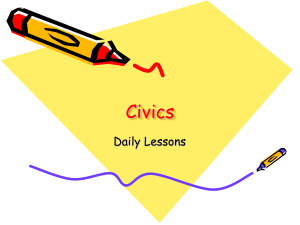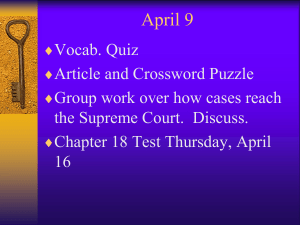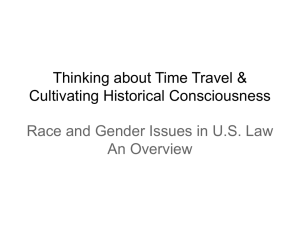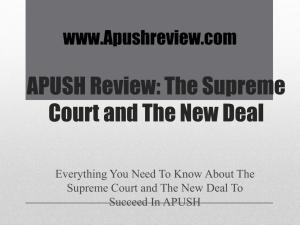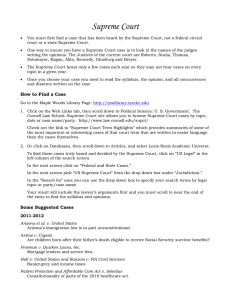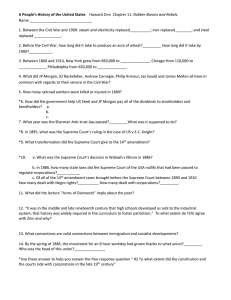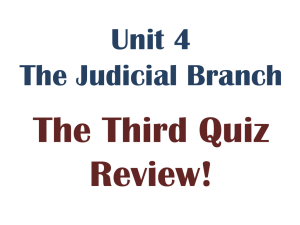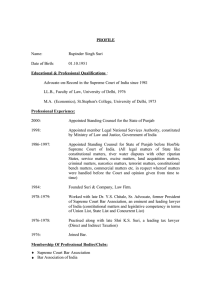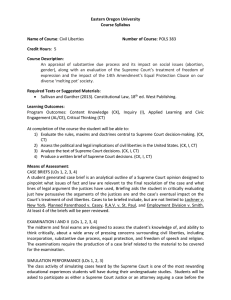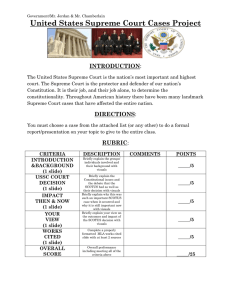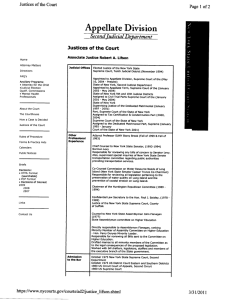Case Brief Project This unit, we have focused on the Judicial Branch
advertisement
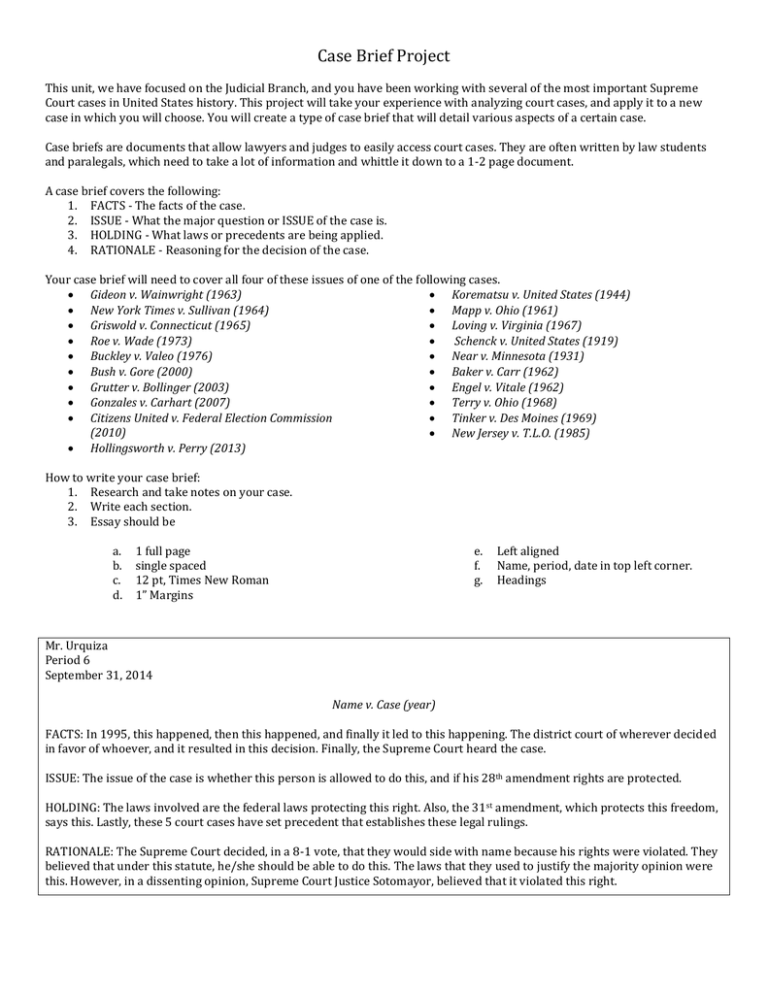
Case Brief Project This unit, we have focused on the Judicial Branch, and you have been working with several of the most important Supreme Court cases in United States history. This project will take your experience with analyzing court cases, and apply it to a new case in which you will choose. You will create a type of case brief that will detail various aspects of a certain case. Case briefs are documents that allow lawyers and judges to easily access court cases. They are often written by law students and paralegals, which need to take a lot of information and whittle it down to a 1-2 page document. A case brief covers the following: 1. FACTS - The facts of the case. 2. ISSUE - What the major question or ISSUE of the case is. 3. HOLDING - What laws or precedents are being applied. 4. RATIONALE - Reasoning for the decision of the case. Your case brief will need to cover all four of these issues of one of the following cases. Gideon v. Wainwright (1963) Korematsu v. United States (1944) New York Times v. Sullivan (1964) Mapp v. Ohio (1961) Griswold v. Connecticut (1965) Loving v. Virginia (1967) Roe v. Wade (1973) Schenck v. United States (1919) Buckley v. Valeo (1976) Near v. Minnesota (1931) Bush v. Gore (2000) Baker v. Carr (1962) Grutter v. Bollinger (2003) Engel v. Vitale (1962) Gonzales v. Carhart (2007) Terry v. Ohio (1968) Citizens United v. Federal Election Commission Tinker v. Des Moines (1969) (2010) New Jersey v. T.L.O. (1985) Hollingsworth v. Perry (2013) How to write your case brief: 1. Research and take notes on your case. 2. Write each section. 3. Essay should be a. b. c. d. 1 full page single spaced 12 pt, Times New Roman 1” Margins e. f. g. Left aligned Name, period, date in top left corner. Headings Mr. Urquiza Period 6 September 31, 2014 Name v. Case (year) FACTS: In 1995, this happened, then this happened, and finally it led to this happening. The district court of wherever decided in favor of whoever, and it resulted in this decision. Finally, the Supreme Court heard the case. ISSUE: The issue of the case is whether this person is allowed to do this, and if his 28th amendment rights are protected. HOLDING: The laws involved are the federal laws protecting this right. Also, the 31 st amendment, which protects this freedom, says this. Lastly, these 5 court cases have set precedent that establishes these legal rulings. RATIONALE: The Supreme Court decided, in a 8-1 vote, that they would side with name because his rights were violated. They believed that under this statute, he/she should be able to do this. The laws that they used to justify the majority opinion were this. However, in a dissenting opinion, Supreme Court Justice Sotomayor, believed that it violated this right.
